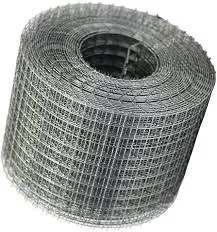-
+86 15030157877
-
sales@galvanizedmetalmesh.com
Juil . 31, 2024 12:03 Back to list
Reinforcement mesh comes in a range of sizes and shapes
Reinforcement mesh comes in a range of sizes and shapes. How do you know which one is right for your project?
In the world of building, choosing the right reinforcement (reo) mesh is crucial for ensuring the structural integrity and longevity of a project.
Among the various options available, three commonly used products are square mesh, rectangular mesh, and trench mesh. Each type serves specific purposes and offers unique advantages. Let’s look into the characteristics, applications, and benefits of these three types of reinforcement meshes.
1. SQUARE MESH

Square mesh is a general purpose reo mesh that features a regular grid of equally spaced square or rectangular openings. It is versatile and suitable for a wide range of applications, including driveways, patios, and warehouse slabs. The regularity of the mesh pattern allows for consistent reinforcement in both horizontal and vertical directions.
KEY FEATURES
- Grid Pattern: Square mesh is characterised by a uniform grid pattern of square or rectangular openings, which allows for even reinforcement in both horizontal and vertical directions.
- Purpose: It is suitable for a variety of applications, including walls, columns, and beams, where uniform reinforcement is required.
- Versatility: Square mesh is adaptable and can be used in a wide range of applications, making it a popular choice for many construction projects.
- Ease of handling: Its regular grid pattern simplifies cutting and shaping, reducing labour time and costs.
Square Wire Mesh
2. RECTANGLE MESH

Rectangular mesh is similar to square mesh but features a grid pattern of elongated rectangular openings. This type of mesh is specifically designed to provide enhanced reinforcement in one direction while maintaining flexibility in the perpendicular direction. It is commonly used in applications where load distribution is critical but requires flexibility in design such as: concrete walls and floor slabs.
KEY FEATURES
- Grid Pattern: Rectangular mesh is characterised by a grid pattern of elongated rectangular openings, allowing for enhanced reinforcement in one direction.
- Purpose: It is ideal for applications where greater tensile strength is needed in one direction.
- Versatility: Directional reinforcement: Rectangular mesh provides enhanced strength in one direction while maintaining flexibility in the other, making it ideal for specific load-bearing requirements.
- Reduced waste: Its design minimises material waste during installation.
3. TRENCH MESH

Trench mesh is a specialised form of reinforcement used primarily in the construction of footings and ground beams. Most commonly sold in 6-metre lengths of 3, 4 and 5 longitudinal bars, it’s typically used in strip footings and beams to maximise concrete strength and minimise concrete cracking. This type of mesh is particularly effective in distributing loads across a wider surface area, making it ideal for applications where weight distribution is a critical factor.
KEY FEATURES
- Shape: Available in a broad range of widths, long wire and cross wire diameter and spacing specifications, which allows it to effectively reinforce concrete in the longitudinal direction.
- Purpose: It is specifically designed for applications where load distribution and added strength in the longitudinal direction are paramount, such as in footings and slabs.
- Efficient load distribution: Trench mesh excels in evenly distributing loads, reducing the risk of cracks or structural failures.
- Labour-saving: Its design minimises the need for additional cutting or shaping, making installation more efficient.
Choosing the right reo mesh is a critical decision in construction projects. Trench mesh, square mesh, and rectangular mesh, each offer distinct advantages and are tailored for specific applications. Understanding their characteristics and purposes will enable building professionals to make informed choices, ultimately ensuring the durability and stability of their structures.
Consult with your engineer about the load-bearing requirements and design specifications to ensure your project is completed safely. Be sure to use ACRS and SRIA certified steel to guarantee your project has the highest quality steel.
-
Welded Gabion Solutions: Durable & AI-Enhanced Designs
NewsAug.01,2025
-
Premium Welded Gabion Mesh | Robust & Eco-Friendly
NewsJul.31,2025
-
Premium Eco-Friendly Roof Tiles | Affordable & Durable
NewsJul.31,2025
-
Premium Roof Tiles for Durable & Stylish Roofing Solutions
NewsJul.30,2025
-
High-Quality Roof Tiles for Durable & Stylish Roofing Solutions
NewsJul.29,2025
-
High Quality Square Wire Mesh Manufacturer & Supplier for Wholesale
NewsJul.29,2025




